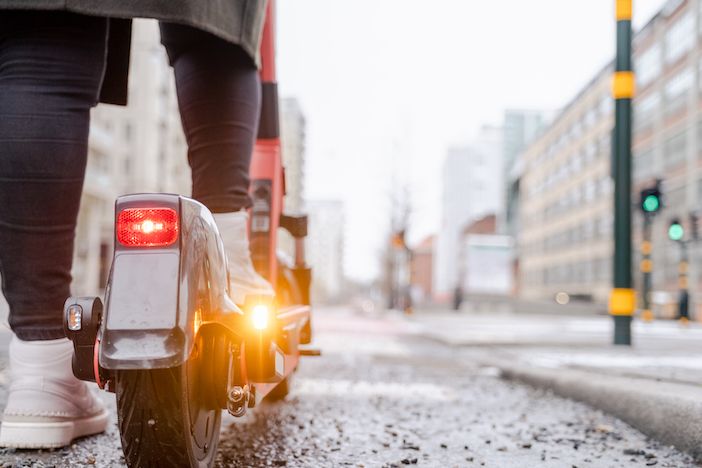E-scooter operator Voi has unveiled its first pollution-sensing e-scooter, which will be rolled out in UK cities in spring 2021. The Voiager 4 features smart sensors to help riders identify and avoice areas with high levels of air pollution, while also enabling this data to be shared with cities to help traffic managers to improve air quality.
The new model scooter also includes noise and light sensors; has an audible alert system to warn pedestrians of approach and indicators for turning; and industry-leading IoT that enables sub-metre location accuracy for more precise vehicle positioning.
The V4 is also designed to integrate better with public transport systems and now features the ability to be unlocked via contactless NFC (near field communication) technology with the tap of a smartphone, smart watch, or transport card. This means that it could be used in conjunction with London’s Oyster card.
“From beating traffic to protecting the environment, Voi has always been focused on providing the best experiences, benefits, and services to our riders and partner cities,” says Fredrik Hjelm, CEO and co-founder of Voi. “The Voiager 4 is our greatest, most exciting e-scooter to date and represents a culmination of years of research and development. Its combination of all-new hardware and software, especially our proprietary IoT technology, takes e-scooters to the next level.”

With a lifespan of 5+ years, the V4 is designed for frequent urban use and the technology has been developed to deliver superior operational efficiency, reducing the ultimate need to keep manufacturing e-scooters. The intelligent system on the e-scooter conducts automatic diagnostic checks that predict the need for maintenance or repairs, identifying 55 unique error conditions, which, if triggered, instantly make the scooter unavailable to hire and alert the operational team. The V4 also includes a dedicated slot for extra sensor devices, expanding the IoT’s future capabilities.
To improve location accuracy, the IoT compensates for lost or degraded GNSS satellite signals in three ways. In an industry first, the IoT uses dual-band GNSS (L1 and L5 bands); comparing and averaging the two signals minimises positioning errors, since each signal can be affected differently by urban features such as tall buildings or trees, or by atmospheric disruptions. It also accesses corrections from EGNOS, provided by he European space agency. When GNSS-only positioning is difficult or impossible, the IoT combines information from various sensors (gyro sensor, accelerometer, scooter speed) to calculate the scooter’s current position.
Additional key V4 features include:
• Widened, all-weather, solid (not air-filled) honeycomb 10” tyres and hydraulic front suspension provide unrivalled grip, brake effectiveness, and shock absorption on all road surfaces.
• Antimicrobial handlebars facilitate safe shared use and prevent the spread of viruses (including COVID-19) by inactivating them on contact.
• Onboard Bluetooth technology communicates with iBeacons at Voi parking racks to ensure scooters are parked with sub-centimeter accuracy.
• Acoustic vehicle alert system (AVAS) notifies pedestrians of an oncoming scooter, especially beneficial to visually impaired and vulnerable road users.






